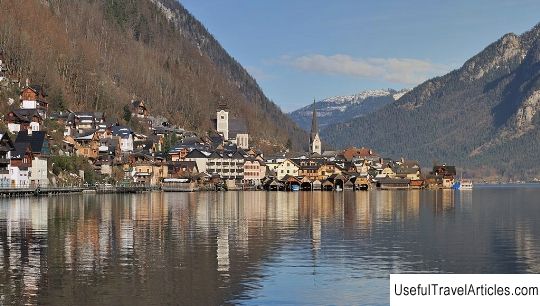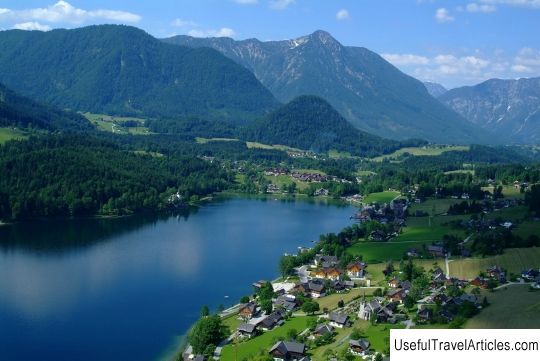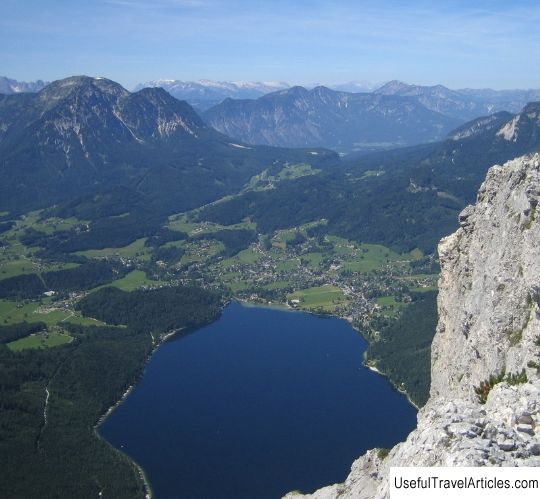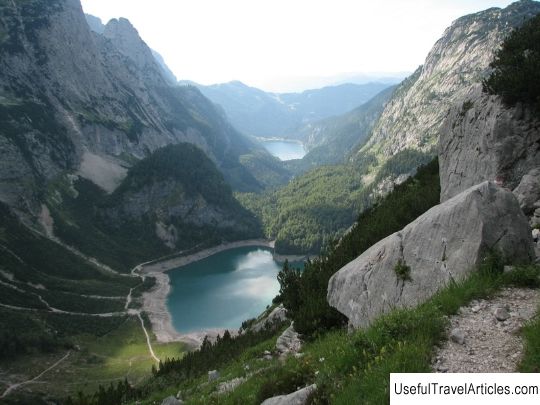Hallstatt description and photos - Austria: Salzkammergut
Rating: 7,7/10 (789 votes) 
Hallstatt description and photos - Austria: Salzkammergut. Detailed information about the attraction. Description, photographs and a map showing the nearest significant objects. The name in English is Hallstatt. Photo and descriptionHallstatt is a municipality in the Salzkammergut, in the federal state of Upper Austria. Part of the district of Gmunden, located on the lake. Hallstatt is located along a narrow coastline between steep mountains, some houses in the village are built on stilts. The city stretches 13 kilometers from west to east, 9 kilometers from north to south. Almost half of the territory is occupied by forests. Hallstatt is famous for its salt mines, which are considered the oldest in Europe. The first written mention of the village dates back to 1311. Earlier data were not found, possibly due to the geographical distance of the settlement from trade routes. In 1595, the oldest pipeline in Europe began to function, through which the dissolved salt was delivered at a distance of 40 km from Hallstatt - in Ebensee. Salt has always been a valuable resource, which is why the region thrived economically. Until the late 19th century, Hallstatt was only accessible by boat or walking along narrow paths. The first road was built only in 1890 along the coast. In 1846, Johann Georg Ramsauser discovered a large prehistoric cemetery, where there were more than a thousand ancient burials. Excavations continued until 1863, the results of which were found burial objects dating back to the Iron Age, and some finds even earlier, bronze ones. Archaeological finds are exhibited in many museums in Austria, and most of them are exhibited at Eggenberg Castle near Graz. This Celtic culture (800-400 BC) ) was named after the city where these artifacts were found - the Hallstatt civilization. In addition to beautiful natural landscapes, the Catholic parish of the Assumption of St. Mary, built on a rock in the late Gothic style in 1505 on the site of more early church. The massive tower is the only remaining part of the previous church. Also of interest is the altarpiece kept in this church - on the sides of the Virgin Mary in the center is depicted St. Barbara is the patroness of miners, and St. Catherine is the patroness of lumberjacks. The altar is guarded by statues of holy knights - Sts. George and Florian. Near the church there is a cemetery and a chapel, where more than a thousand human skulls are kept, decorated with floral ornaments with names, date and cause of death. This vault (ossuary) arose due to a lack of space in the cemetery: 10 years after the funeral, the body of the deceased was dug up, the bones were cleaned, and the skulls with appropriate marks were placed in the chapel. In 1996 Hallstatt was included in the UNESCO World Heritage List. Up to 70 thousand tourists come to this small village annually to admire the unforgettable scenery of the lake, as well as visit the caves in neighboring Obertraun. Hallstatt hosts various cultural and sports events every year.            We also recommend reading Palazzo della Carovana description and photos - Italy: Pisa Topic: Hallstatt description and photos - Austria: Salzkammergut. |




